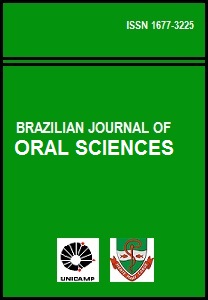Abstract
Aim: To evaluate the clinical reproducibility of three electronic apex locators (EALs), Joypex 5, RomiApex A-15 and Novapex. Methods: Twenty-five patients requiring endodontic treatment were selected. Sixty root canals were measured by the three EALs to determine their respective working length, which was defined as a zero reading on the EAL. A new K-file of the same size was used for each measurement. The file length was fixed with a rubber stop and measured with a caliper to an accuracy of 0.1 mm. Data were analyzed statistically using paired t-tests with the Bonferroni correction and Bland-Altman plot to determine the reproducibility of clinical data among the EALs. Significance level was set at 5%. Results: Mean and standard deviation values measured by the three EALs showed no statistically significant differences. Identical readings by all three EALs were found in 38% of root canals. Fifty percent differed by less than ± 1.0 mm and only 1.3% exceeded a difference of 2.0 mm. Conclusions: The clinical reproducibility of the three devices was confirmed with no significant differences among them, indicating that they are effective for clinical use.The Brazilian Journal of Oral Sciences uses the Creative Commons license (CC), thus preserving the integrity of the articles in an open access environment.
Downloads
Download data is not yet available.

